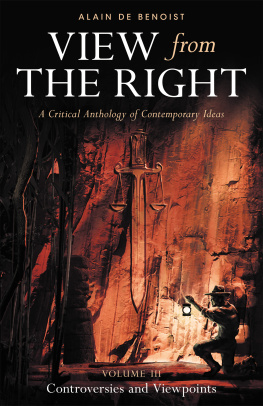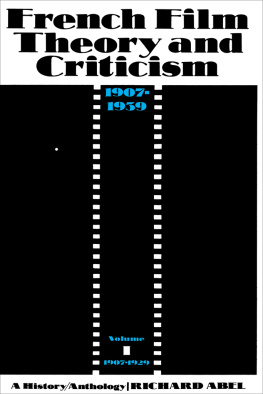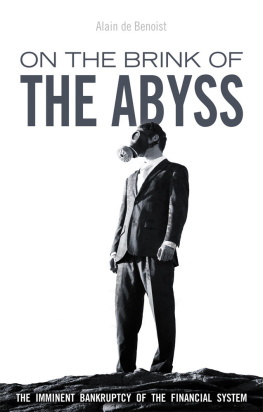Alain de Benoist
View from the Right
A Critical Anthology of Contemporary Ideas
Volume I: Heritage and Foundations
Translated by Robert A. Lindgren
Arktos
London 2017
Copyright 2017 by Arktos Media Ltd.
All rights reserved. No part of this book may be reproduced or utilised in any form or by any means (whether electronic or mechanical), including photocopying, recording or by any information storage and retrieval system, without permission in writing from the publisher.
Printed in the United Kingdom.
Original title
Vu de droite: Anthologie critique des ides contemporaines (Paris: Copernic, 1977)
ISBN
978-1-912079-76-6 (Paperback)
978-1-912079-97-1 (Hardback)
978-1-912079-96-4 (Ebook)
Translator
Robert A. Lindgren
Editor
Jason Reza Jorjani
Cover and Layout
Tor Westman
Website | Facebook | Instagram | Twitter
To Jean-Claude Valla
Translators Preface
T his present work is, in many respects, a series of intellectual engagements with a surprisingly wide range of contemporary scholarly publications, from palaeontology to postmodernism. In the course of this undertaking, Alain de Benoist cites a wealth of French works, as well as a considerable number of French translations of works by foreign authors. As a translator, I had to make a number of decisions on how to deal with these citations, especially because they are not simply relegated to the status of footnotes, but form a major part of the primary discussion.
My approach has been as follows:
Where an English edition of a particular book exists, I have attempted to render the book by its known English title, while referencing the French edition cited by Benoist in the footnotes. Where an English edition does not exist (or is unable to be sourced), I have rendered the French title in the body of the text as given by Benoist, and glossed the translation of the title in the footnotes.
For books that are originally written in a foreign language (e.g. German), but which are cited in French translation, I have, wherever possible, cited both the original edition and the French edition in the footnotes, while rendering the title in English in the body of the text. Exceptions to this occur where Benoist specifically cites the original foreign-language title, or where no English edition of the cited foreign-language work can be found. Any relevant clarifications, translations, or editions are contained in the accompanying footnotes.
In several places, Benoist also cites lengthy passages from Greek, Latin, or German authors in French translation. Where time and resources have permitted, I have either sourced and translated the original texts directly, or sourced and adapted existing English translations. Where time and resources have not permitted, I have simply translated the French translation as given in Benoists text.
I would like to thank John Morgan for inviting me to translate this fascinating work, while acknowledging, on my part, that a translation is by no means an endorsement of the authors views, nor those of the publisher. I would also like to express my sincere thanks to my friend and colleague, Sylvain Saboua, for assisting me with certain aspects of the translation that I found especially difficult. Any errors or shortcomings in the translation of course remain my own.
Robert A. Lindgren
Preface to the New Edition (2001)
T he first edition of View from the Right was published in 1977, twenty-five years ago. In the years which have followed, this book has seen five successive reprints, with an international print-run of around 25,000 copies. It was translated into Italian and Portuguese in 1981, into German in 19834, and into Romanian in 1998. In June 1978, it also received the Grand Essay Prize from lAcadmie franaise, under circumstances which I have had occasion to speak of elsewhere. but whose substance has been largely revised and expanded. The articles are grouped under broad rubrics designed to facilitate reading. The subtitle, Critical Anthology of Contemporary Ideas, aptly expresses the intention that presides over this redaction: to prepare a portrait of the intellectual and cultural landscape of the moment, to establish the state of affairs, to signal the tendencies, to open the pathways and provide benchmarks to aid (and incite) the task of thinking in a world that is already in the process of considerable change.
The author is obviously ill-placed to judge the causes of the success, relative but certain, that this book has known. But what is most striking today is the extent of the echo made at the time by this release from a publishing house (ditions Copernic) which itself only occupied a marginal position. The act of releasing a book apparently identifying as right-wing posed no obstacles to the publication of numerous reviews in the mainstream press. The testimonies and extracts of literary criticism published in the appendix of this re-edition are a testament to this. A quarter of a century later, this tendency is brutally reversed. The rise of uniform thought, exploited by those whose interests it could best serve, has done its work. I have been but one victim among many. The unjust attacks and accusations have created a zone of increasing ostracism and prohibition which spreads further and further, in regularly expanding circles. A number of authors published in the seventies by the greatest publishing houses are today relegated to marginal publishers. A number of writers and intellectuals willingly welcomed to the open forum by the great evening newspapers are now requested to express themselves elsewhere. The catalogues of the great publishing houses have been purged to satisfy the demands of the politically correct. Conformity, intellectual laziness, and lack of curiosity have done the rest.
The title of this book has been the origin of many ambiguities. Two years later, during the summer of 1979, a vast press campaign would establish the international notoriety of the New Right. We would effectively see the right resurface during the course of the following decades under two different forms: the neoliberal variant, symbolised by the era of Ronald Reagan and Margaret Thatcher, and the national-populist variant, illustrated by various tribunes who talk loudly but think superficially. These two variations which, in the era of Berlusconi and Haider, do not tend to be more than one, have no correspondence whatsoever to the idea that I had in 1977 of a right engaging the realities of a nascent postmodernism. I had hoped to see the birth of a movement of thought (and action) defending the cause of the people, a right with a difference, participative democracy, and the primacy of free values over commercial values. Instead I have seen the right teach the logic of profit and the principle of exclusion. Today as we witness the complete obsolescence of the right-left split, I do not regret being shut out.
*
One of the passages from the introduction to View from the Right that has been cited most frequently is this: I hereby define the right , by pure convention, as the consistent attitude to view the diversity of the world, and by consequence the relative inequalities that are necessarily the product of this, as a positive thing; and the progressive homogenisation of the world, extolled and effected by two-thousand years of egalitarian ideology, as a negative thing. This phrase summarised my way of viewing things, and even today I still recognise myself well enough. This profession of anti-egalitarian faith, mixing together the contiguous but distinct notions of diversity and inequality, and homogenisation and equality, was also somewhat ambiguous. The obvious risk in making the struggle against egalitarianism the principal objective was to appear to legitimise practices of exclusion (in the name of the presumed inferiority of such and such a group) or of elitist liberal practices (the inequality of conditions as the just result of equalities of nature, social justice as illusion). I would like to take the opportunity presented by this reedition to return to this problematic complex in more detail.
Next page











